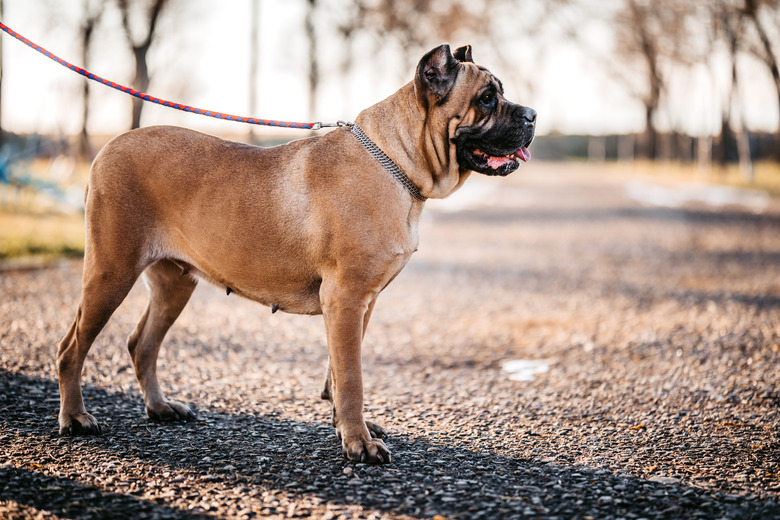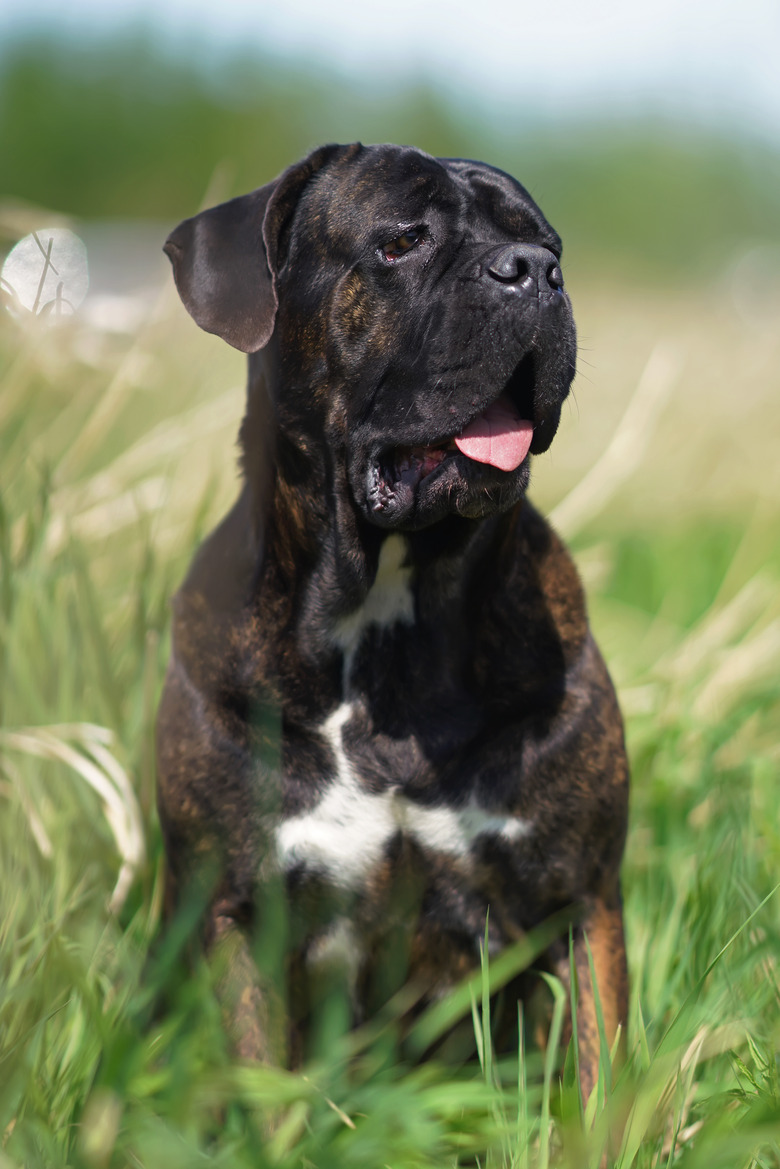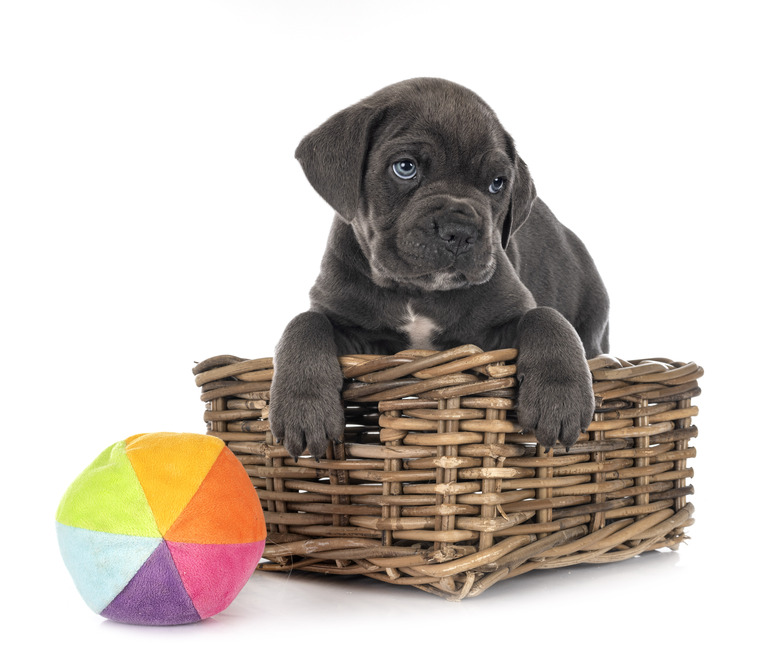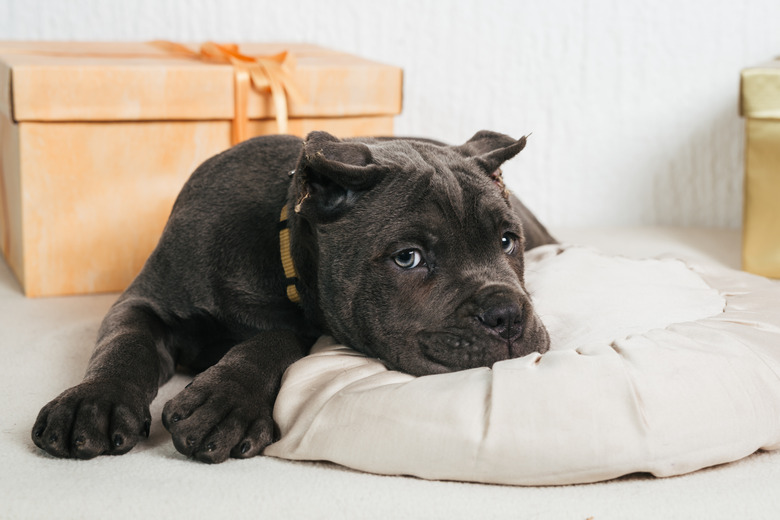The Cane Corso: History, Personality, And Essential Facts
Have you heard of the Cane Corso? Though not an especially common dog in America, the Cane Corso is an interesting dog from Italy, with a long and rich history.
The Cane Corso: The Basics
The Cane Corso: The Basics
The Cane Corso is a medium-large size dog breed. It comes from an ancient Italian mastiff breed of Molossus Dog. Though large in size as well as muscular and sturdy, it moves with grace and elegance. Traditionally, and to this day, it has been a watchdog and hunter of game, like wild boar. The Cane Corso tends to appear in black and fawn colors. It also tends to be rather docile, very affectionate and loyal, and, some people claim, easy to train.
Cane Corso History
Cane Corso History
The Cane Corso dog (plural: Cani Corsi) is a medium-large Italian breed of dog. It belongs to a subcategory of working breeds called mollosus dogs. They are named for the Molossi, an ancient Greek people who are believed to have bred large, big-boned guardian dogs of Mastiff type. These mollosus dogs were brought back to Italy and bred with native Italian breeds during the Roman Empire by armies that had occupied the Greek islands. The modern Corsi are the decedents of these crosses, along with the Neapolitan Mastiff. Originally, the Corsi were dogs used in battle, charging ahead with buckets of flaming oil strapped to their backs. These early breeds of Corsi are believed to be bigger than their modern counterparts. Corsi ultimately adapted to other jobs like farming, livestock droving, guarding farms and henhouses, and even boar hunting. The Corso population began to dwindle in part thanks to invasions of the Italian peninsula, various political upheavals, and mechanized farming. It was in the 1970s that a group of Italian fanciers joined forces to revive the breed. In 2010, the breed was recognized by the AKC.
Cane Corso Personality
Cane Corso Personality
It's important to note that breed is not a reliable indicator of personality in any individual dog, because a dog's personality is a complex combination of factors.
The Cane Corso, like all other dog breeds, benefits from early socialization with people and other dogs. This can be especially important with large dog breeds, who benefit from having "manners" so they are less likely to intimidate people and other dogs. Though intimidating in appearance, people report that the Cane Corso breed tends to be friendly, intelligent, docile, affectionate, and loyal. Mental and physical stimulation are both necessary to prevent undesirable behavior from becoming common, as with any dog.
Cane Corso Appearance
Cane Corso Appearance
An adult Cane Corso reaches nearly 28 inches at the shoulder and often weighs more than 100 pounds. Their breed standard is large heads, flat foreheads, and short, stiff, double-layered coats. They typically come in two colors: black and fawn. It's a good idea to brush them, particularly during shedding season, to help remove dirt and enable new hair to grow.
Cane Corso puppies
Cane Corso puppies
Though all dogs, of course, grow at different rates, you will be dealing with some large puppies. Typically, Cane Corso puppies will be between 21 and 24 inches tall at six months old. Various factors will affect how quickly they grow and how much bigger they get, but generally, you should be prepared to have a large puppy on your hands.
Cane Corso Essential Facts
Cane Corso Essential Facts
- Ranks 32 out of 197 in AKC breed popularity
- Lifespan is typically 9 to 12 years
- Common health conditions may include hip dysplasia, idiopathic epilepsy, eyelid abnormalities, and demodex mange
- Can be susceptible to bloat, a sudden and life-threatening stomach condition
- This breed typically needs a serious amount of exercise.



